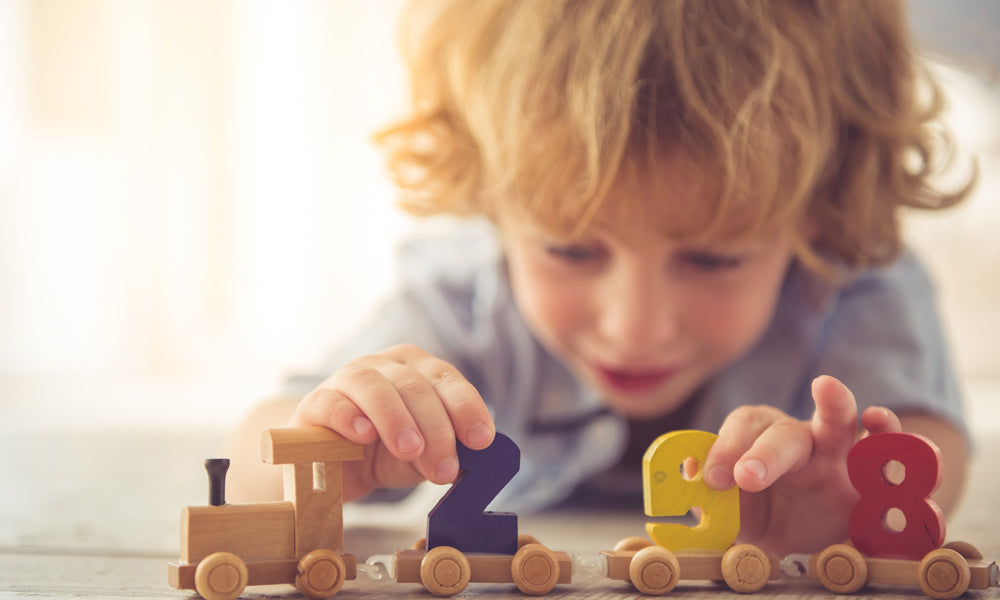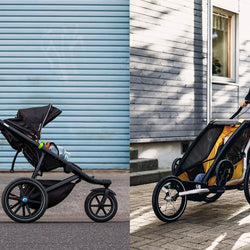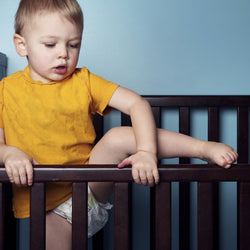Independent Play Time Through the Stages

by Annie Wiesman
Jul 27, 2017
Children of any age learn through play, no surprise right? But don’t think you need to intentionally play with your child at every moment.
When we provide an environment that stimulates growth and development, our children learn valuable skills. By giving them a quiet, unstructured time to explore their world, free from distractions and input, we encourage discovery and spontaneous interactions with their surroundings.
Here is a brief description of what independent play time looks like through each stage. I’ve included a few toy resources to get you thinking about the types of creative and independent play your child needs.
Independent play through the stages
Age: 0-6 months: Practice Play
As soon as baby is able to hold her head up and maneuver a toy in her hands, she is ready for blanket time. Baby is using her senses to take everything in, so toys that are brightly colored, easy to grasp, and squeak, rattle or jingle will stimulate development.
Duration: Start with five or ten minutes and gradually lengthen the time as she will tolerate.
Article Continues Below Advertisement
Resources:
Age: 6-18 months: Sensorimotor stage
Your child is engaging in more purposeful learning through the senses and movement, including activities such as looking, listening, reaching, grabbing, and sucking. Additionally, they are developing fine motor skills, beginning to recognize a cause and effect relationship with their actions, and they are learning to identify similarities or differences among objects.
Duration: If you are just getting started with independent play time at this stage On Becoming Babywise suggests that you start with five to ten minutes per day. “Over the next two to three weeks, work up to 20 minutes, then 30 minutes. After a month, consider extending the time to 45 minutes.”
Article Continues Below Advertisement
Resources:
Age: 18 months – 3 years: Language and Social-Emotional Development
As your child becomes more mobile and learns through movement, time to herself is still a critical part of development. Creative and imaginative play helps to expand language and social-emotional development. Fine motor skills are also quickly increasing, so toys that increase hand-eye coordination are perfect.
Duration: As with any other stage, start small and extend the time over a few week period. Remember to keep your expectations realistic from day to day, and by three years-old, aim for at least an hour of quiet time or longer if your child tolerates it.
Article Continues Below Advertisement
Resources:
Age: 3 – 5 years: Extended independence
Cognitive development is increasing as your child gathers new information and builds on their existing knowledge (as well as making adjustments to previously held ideas). As language continues to develop, you may hear your preschooler talking to herself as she engages in make-believe play with toys.
Duration: I typically hope for a two-hour stretch of quiet time during this stage.
Article Continues Below Advertisement
Resources:
Many of the toys from the previous stage are still enjoyable to children in this stage. Increase puzzle complexity and find toys with smaller items such as beads or Lego’s to promote fine motor development.
- Doll house
- Beads
- Play dough
A final note about independent play and screen time
TV or screen time should not be considered part of independent play time. The AAP recommends:
- “For children younger than 18 months, avoid use of screen media other than for video-chatting.
- Parents of children 18 to 24 months of age who want to introduce digital media should choose high-quality programming, and watch it with their children to help them understand what they're seeing.
- For children ages 2 to 5 years, limit screen use to 1 hour per day of high-quality programs. Parents should co-view media with children to help them understand what they are seeing and apply it to the world around them.”
Annie Wiesman
Annie Wiesman is the co-author of “Education Begins at Birth: A Parent’s Guide to Preparing Infants, Toddlers, and Preschoolers for Kindergarten.” She is a former kindergarten teacher turned stay-at-home mom who enjoys traveling, hiking in the mountains, and creating memories together with her husband and little girl.














